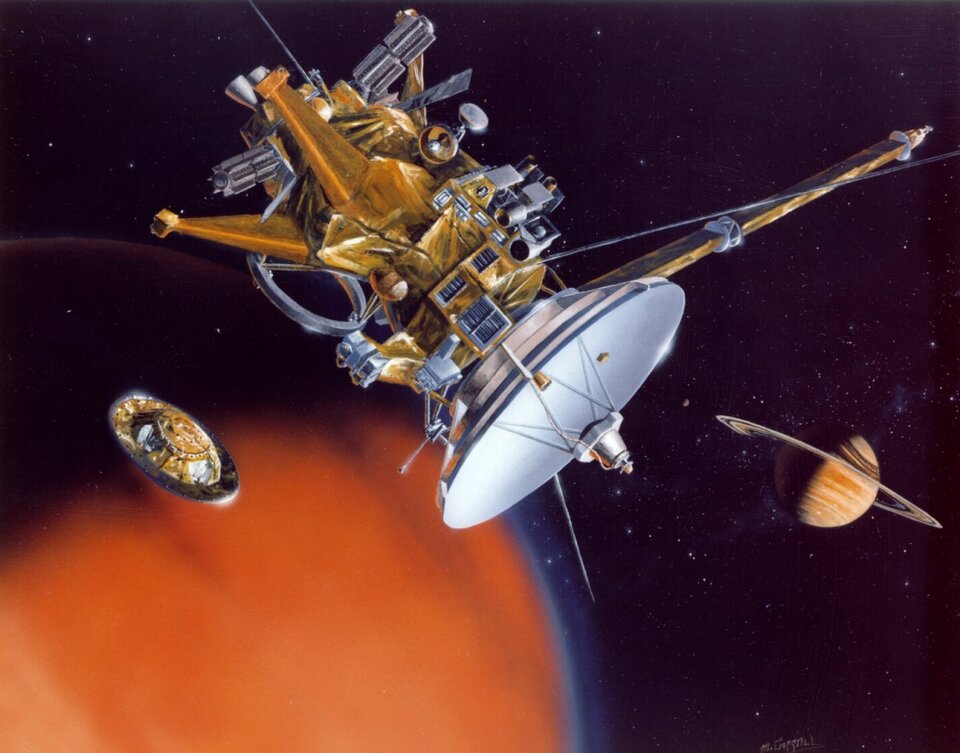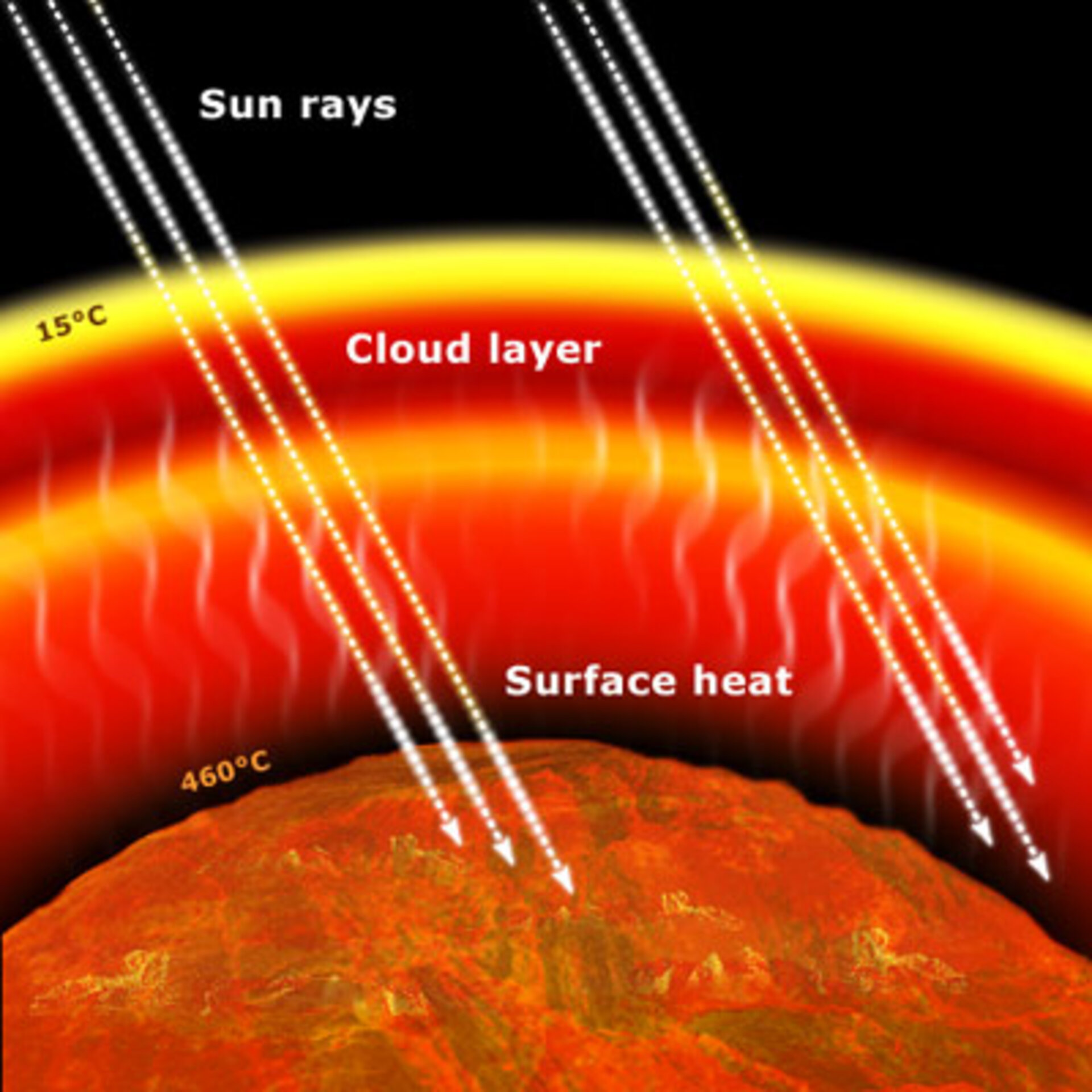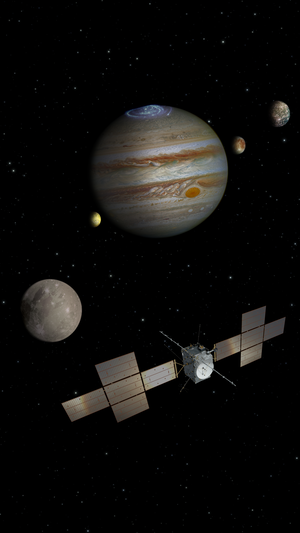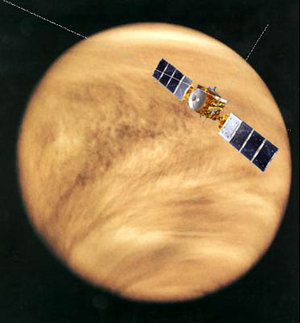Climate change on other planets
ESA's missions to Venus, Mars and Saturn's moon Titan will soon provide useful information to understand how our own planet's climate is regulated.
The Earth's climate seems to be changing much more quickly than it used to do. Human beings are altering one of our planet's natural temperature regulators - the 'greenhouse effect'.
The greenhouse effect is so called because the certain gases in Earth’s atmosphere act like the glass in a greenhouse. The Sun's energy heats the Earth's surface and the planet radiates energy at different wavelengths back into space. However, these atmospheric gases trap some of the outgoing energy, and it is retained as heat.

However, it is not a good example of what will happen to Earth due to human activities. Life on Earth would disappear due to the extreme temperatures long before reaching even half of the concentrations of carbon dioxide on Venus.
Without this natural phenomenon, average temperatures on Earth would be 30 degrees lower than the current temperature. Unfortunately, fossil-fuel combustion and deforestation release large amounts of greenhouse gases to the atmosphere, strengthening the greenhouse effect. Global temperatures have increased more than half a degree in the last century as a result.
For a really strong greenhouse effect, we should look at Venus. Venus is similar to Earth in terms of size and mass, but its surface temperature is about 460 °C. This is hot enough to melt lead! The Venusian atmosphere is mainly made up of carbon dioxide, a greenhouse gas.
On Earth, carbon dioxide makes up only a tiny fraction of the atmosphere. However, man-made emissions have caused carbon dioxide concentrations here to increase by about 30% since pre-industrial times.
ESA's Venus Express mission, due for launch in 2005, will try to find out why is there so much carbon dioxide in the Venusian atmosphere and what made Venus evolve so differently from Earth. Venus will help us understand what happens when the greenhouse effect is really extreme.

As a complete contrast to Venus, there is Mars. The Red Planet displays hardly any greenhouse effect. Mars does have some atmospheric carbon dioxide, but almost no atmosphere! The existing atmosphere is so thin that it cannot retain energy from the Sun. There are therefore extreme temperature contrasts between day and night, or sun and shade.
However, most scientists agree that Mars was much warmer in the past and even had oceans, which means that the atmosphere was also very different. About 3600 million years ago, something happened and the planet evolved towards its current state. What could have triggered such a huge change in climate? Mars Express will help to answer this question.

On Titan, Saturn's largest moon, there is a moderate greenhouse effect, mostly due to the large concentrations of methane (another greenhouse gas) in its atmosphere. Astronomers have compared Titan with the early Earth. It would be a suitable place for life if it were not so cold: its surface is at a freezing -180 °C.
ESA’s Huygens probe is currently heading to Titan. What we learn there will certainly be useful in understanding the other planets. Understanding the factors influencing Titan, Venus and Mars, could also help to us to understand the climate on Earth.















 Germany
Germany
 Austria
Austria
 Belgium
Belgium
 Denmark
Denmark
 Spain
Spain
 Estonia
Estonia
 Finland
Finland
 France
France
 Greece
Greece
 Hungary
Hungary
 Ireland
Ireland
 Italy
Italy
 Luxembourg
Luxembourg
 Norway
Norway
 The Netherlands
The Netherlands
 Poland
Poland
 Portugal
Portugal
 Czechia
Czechia
 Romania
Romania
 United Kingdom
United Kingdom
 Slovenia
Slovenia
 Sweden
Sweden
 Switzerland
Switzerland
































